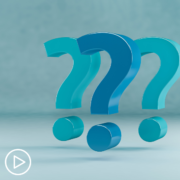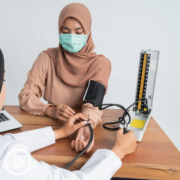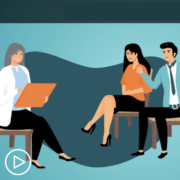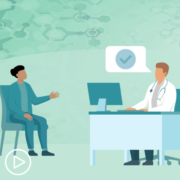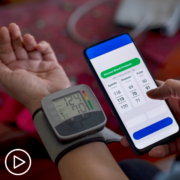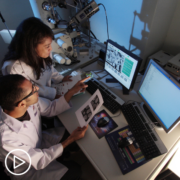Advances in Managing CAR T-Cell Therapy Side Effects
Advances in Managing CAR T-Cell Therapy Side Effects from Patient Empowerment Network on Vimeo.
What progress is being made in treating the side effects of CAR T-cell therapy? Myeloma expert Dr. Krina Patel discusses the research and advances being made in understanding and managing the common issues associated with this treatment.
Dr. Krina Patel is an Associate Professor in the Department of Lymphoma/Myeloma at The University of Texas MD Anderson Cancer Center in Houston, Texas. Dr. Patel is involved in research and cares for patients with multiple myeloma.
See More From Thrive CAR T-Cell Therapy
Related Resources:

|
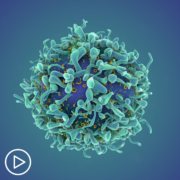
Recovering From CAR T-Cell Therapy | What Can Myeloma Patients Expect? |

What Side Effects Are Possible Following CAR T-Cell Therapy? |
Transcript:
Katherine Banwell:
Dr. Patel, what about managing the side effects of CAR T? Is that improving?
Dr. Krina Patel:
It is. I think just the fact that we are now seeing less of the neurotoxicity that we were seeing in the initial patients that were getting CAR T, and the serious neurotoxicity like the Parkinsonianism or patients couldn’t walk or hold things because of the tremors they were having that were so significant.
And then something kinda like Guillain-Barré where people are getting ascending paralysis. And so, again, those are very serious things that we don’t want any of our patients to get. And again, most of it was with cilta-cel and their CARTITUDE-1 study. There is a black-box warning with ide-cel too that that can happen.
We just don’t see it at the same rate. And again, when patients got better bridging going into CAR T, that rate dropped from 6% to 0.5%. So, it really is a huge difference by just giving better bridging and having myeloma controlled better going in.
We are seeing some other side effects that we didn’t necessarily see on the original clinical trials, like facial palsies. These are things where patients can talk very well anymore or their side of their face is drooping. And those are reversible thankfully, for the most part with steroids, things like that. So, we watch for that. There’s some other side effects.
Again, these are immune cells going into your body, so anything can happen. So, we definitely keep a close eye on all of our patients. But for the most part, especially things like infections and this neurotoxicity, we’ve learned that again the less myeloma going in, the better patients do and the faster they recover.
So, for the most part, patients now are doing much, much better than when patients were originally on those trials where we didn’t know what was gonna happen. And I think the infection piece is such a big deal; that our patients definitely need supportive care.
So, even though this is a one-and-done where you get your chemo, you get your CAR T’s and then you’re not on any myeloma therapy, you are on supportive therapies; so, things like IVIG for your immune system, things to protect you against something called PJP pneumonia for at least six months if not longer.
You’re still on anti-shingles medication. So, it’s not that you stop all medicines, but it’s you stop the myeloma medicines. And then, at least for the first six months, maybe even up to a year we have to make sure you don’t get any major infections.


